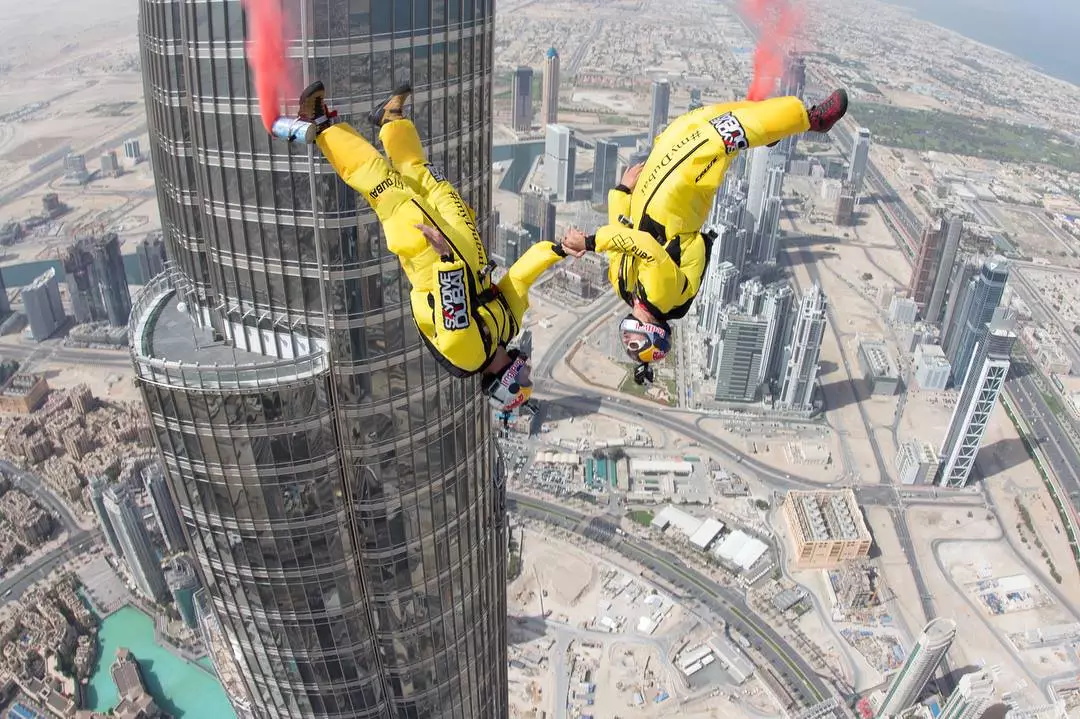He flew too close to the sun. French extreme sports athlete Vince Reffet has died after a jet suit training incident in the desert near Dubai. The 36-year-old was the second person on the planet to fly Yves Rossi’s Jetman flight suit.
The Jetman team announced Reffet's passing today with a short Facebook post reading: "It is with unimaginable sadness that we announce the passing of Jetman Pilot, Vincent (Vince) Reffet, who died this morning, 17 November during training in Dubai.
"Vince was a talented athlete, and a much-loved and respected member of our team. Our thoughts and prayers are with his family and all those who knew and worked with him. We are working closely with all relevant authorities and ask that you please keep Vince’s family in your thoughts and prayers."
New Atlas readers have seen plenty of Reffet's exploits over his last five years as a Jetman pilot. These carbon-winged devices offer what's probably the purest experience of human flight that current technology allows. Their four beefy jet turbines enable pilots to rocket through the air at speeds up to and over 250 mph (400 km/h), banking and soaring like jet-powered birds in flight.

Compared to David Mayman's Buck Rogers-style jetpacks, Franky Zapata's Green Goblin-style jetboards and Richard Browning's Iron Man-style jet suit, Jetman's winged design has probably been the safest of the lot for most of the 14 years since Yves Rossy first took flight. That's because until recently, the jet wings launched out of an aeroplane or helicopter rather than taking off from the ground.
This may seem counter-intuitive, but when it comes to human flight, anything close to the ground is the most dangerous part. An engine or electronics failure that leaves you plummeting from a high altitude is no big deal; you can pop a parachute. But when you're hovering close to the ground, there's just no time to get a chute deployed and slow your fall.
This is why Mayman, for example, does the vast majority of his flights over water; a crowd can enjoy the spectacular sight and furious noise of a jetpack performance at reasonably close quarters, and if something goes wrong, he'll end up soggy but live to fly again. It's why Franky Zapata's decision to race a Lamborghini over rocky desert at speeds over 100 mph (160 km/h) in this famous Devin Supertramp video made us wince so hard.

The Jetman team announced a new capability to take off vertically from the ground late last year, with a self-stabilizing system designed to allow pilots to hover. In February 2020, Vince Reffet put on a stunning display of the system's VTOL capabilities, taking off in Dubai and briefly hovering before rocketing skyward and pulling some crazy loops. Without any further information to go on at this stage, we can only assume Reffet's fatal accident resulted from a low-altitude problem with this VTOL system.
Regardless of how he went out, Reffet lived a life few could even dream big enough to imagine. The son of veteran skydivers, he made his first solo jump in 2000, then went on to become a world champion at Freeflying, a team skydiving event that includes vertical body orientations and much higher speeds than traditional belly-down freefall.

Rarely far from his Soul Flyers "partner in crime" Frédéric Fugen, the pair dominated the sport between 2004-2009, formed and became expert BASE jumpers and wingsuit flyers as well. In 2015, Reffet and Fugen became the first people other than Yves Rossy to fly the Jetman jet wing, and have been the primary demonstration pilots ever since. He soared with jetplanes, jumped off the Burj Khalifa, shot the gap at China's famous Heaven's Gate. Only a couple of people in history have felt the things this extraordinary man has felt. Reffet is survived by his wife of three years, Agnes.
Fly on, you beautiful madman! We leave you with a video of Reffet and Fugen's Heaven's Gate flight in China, just to give you a sense of what this extraordinary man's life was life.
Souce: Jetman Facebook page





